Lavish, original, gigantic: the Domus Aurea is the symbol of the ingeniousness of Emperor Nero, and that of the First Empire, which changed the face of Rome.
Located opposite Rome’s Colosseum, Domus Aurea is perhaps the most important monument of Ancient Rome. Yet, not many people have heard about it.
During my time in Rome, I was fortunate enough to get exclusive access to the Domus Aurea for a private tour and interview with the Scientific Director of the Domus Aurea, Prof. Alessandro D’Alessio. Here are some interesting facts about the Domus Aurea which I hope will inspire you to visit it.
Want to visit Domus Aurea? Book your tour here
What is the Domus Aurea?
Domus Aurea, from Latin meaning “Golden House”, was an opulent residence built by Emperor Nero in 64AD. It was immense, decadent, and innovative, pushing the boundaries of architecture. For centuries it was lost. Then by accident, it was rediscovered during the Renaissance.
What has been excavated so far sits on the Oppian Hill and is said to have been a pavilion, not a living quarters. Due to the lack of kitchens and lavatories, archaeologists suggest it was probably used as a space to talk a stroll around and appreciate the view of the valley to the south and admire the lavish interior decorations and works of art.
Domus Aurea was the creation of an Emperor who had a deep appreciation for the arts in all its forms including music, paintings, poetry, and sculptures. Nero took great interest in every detail of the project, and according to Tacitus’ Annals, he oversaw the engineer-architects, Celer and Severus, who brought to life the palace of Nero’s dreams. On entering Domus Aurea for the first time, Roman writer Svetonio documents Nero as saying:
Great! Finally, I can start to live like a human being! – Svetonio, Nerone, 31.2
What did the Domus Aurea look like?
Domus Aurea’s extensive decorative gold leaf dazzled in the sun. Yet, that was not the only extravagant element of its decor. The walls, dressed with ornate frescoes inspired artists such as Raphael, Michelangelo, and Casanova giving birth to a new art style, Grotesque. Setting new trends during the Renaissance.
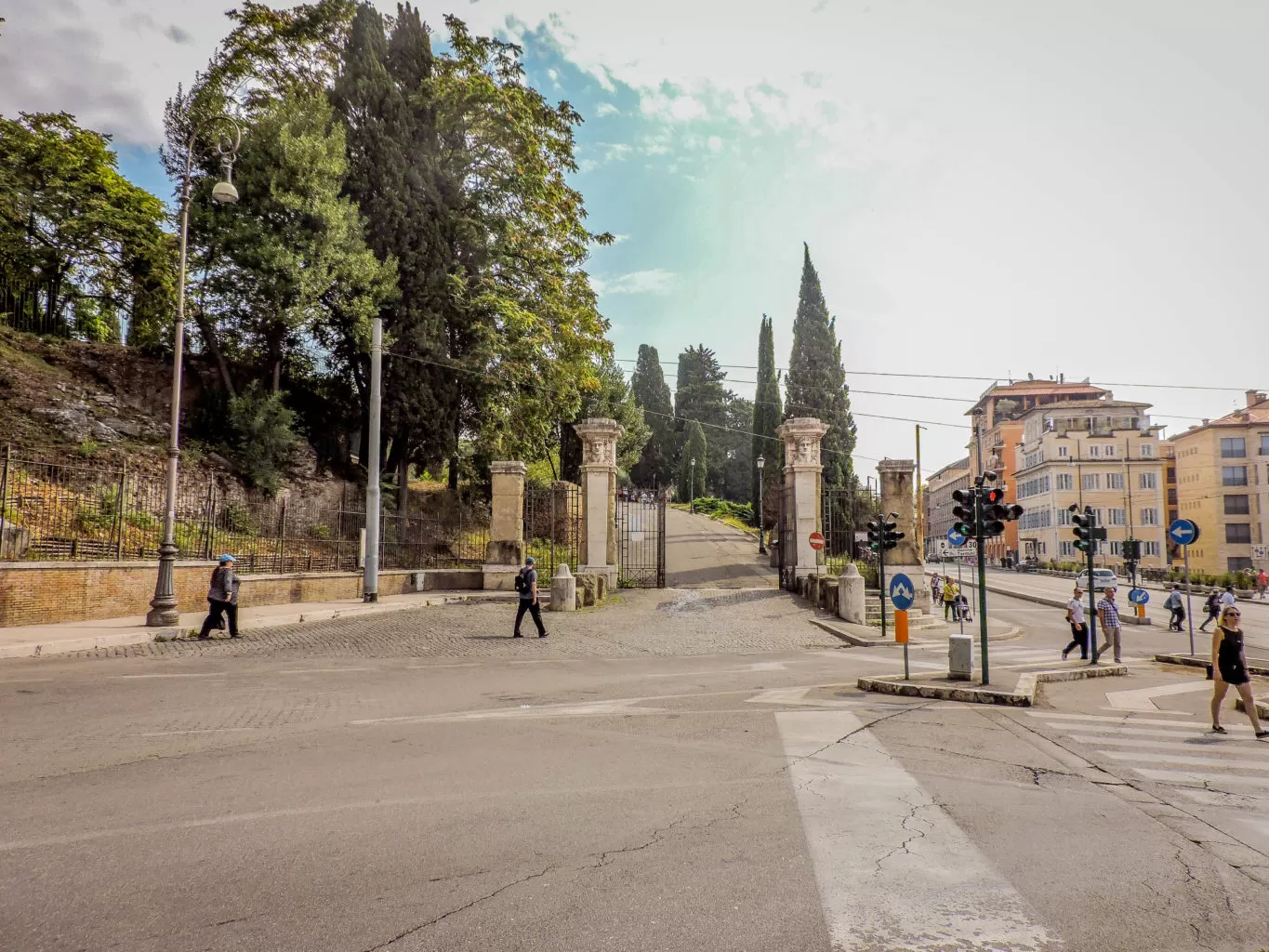
Original entrance gates to Domus Aurea
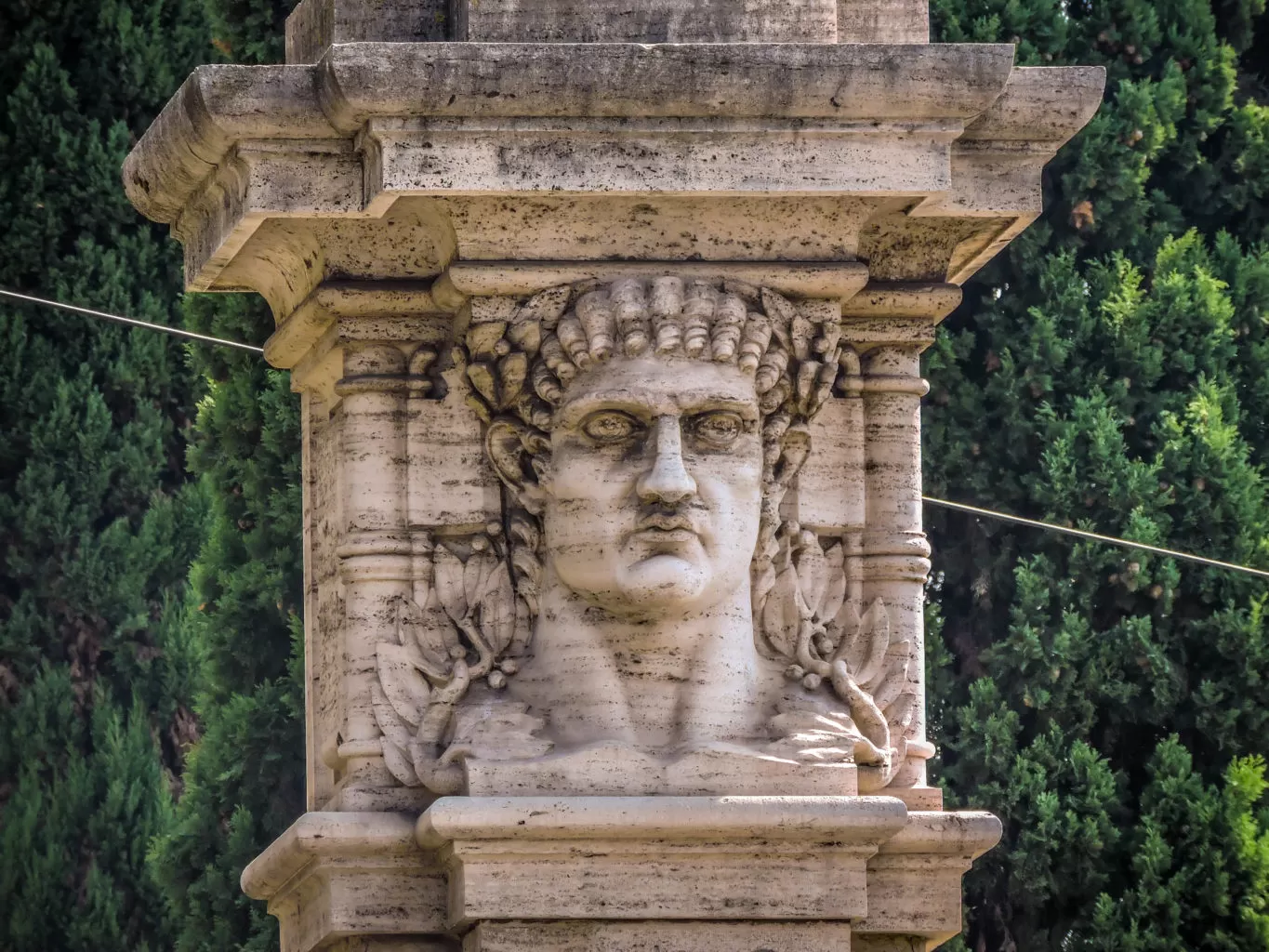
Emperor Nero’s bust on the entrance gates

View of the Colosseum with the road leading to the entrance of Domus Aurea on the right
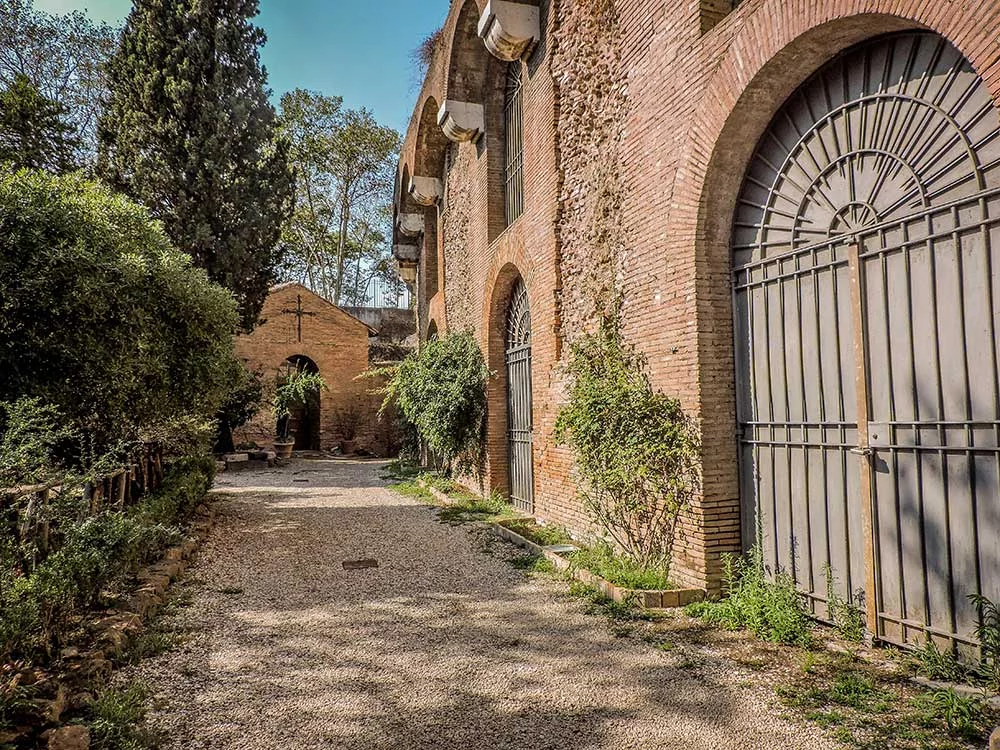
Domus aurea outside
Stuccoed ceilings were dressed with semi-precious stones and ivory veneers, while the walls were frescoed, coordinating the decoration into different themes in each major group of rooms. The sound of flowing indoor fountains echoed throughout.
Each room was flooded with the warm Roman light. The interior rooms were ingeniously lit by downward sloping ‘windows’ from adjacent rooms.
All of this overlooked a valley with a grand lake. Years later this same lake was drained in order to build the Colosseum. The ability to stage fake naval battles was thanks to the lake’s water system.
Domus Aurea’s most celebrated and influential feature was the bright octagonal court that opened up to the heavens via a giant oculus in its large dome. Nothing before it had ever been built. It became the model for Rome’s magnificent Pantheon built years later and has continuously been studied and copied throughout history.
Historian Suetonius wrote a vivid description of the palace in the ‘Lives of the Caesars, Nero’. While historians were skeptical at its accuracy, a recent discovery suggests that Suetonius’ description was at least partially correct.
The main banquet hall was circular and constantly revolved day and night, like the heavens.
Archaeologists have found calcite deposits on the surrounding stones suggesting that the floor’s constant movement may have been powered by water channelled through a system of gears.
This once giant residence in the heart of Rome is now hidden. Buried. Remnants of Roman walls hint at its presence below.
Thirty-five years after its completion in 68AD, Emperor Trajan commissioned the construction of thermal baths above Domus Aurea, forcing the palace underground. Then, during the fascist regime, a park was built. Today, imposing tree roots and severe flooding threaten the structure of Domus Aurea.

Map showing what’s been excavated. Original walls of Domus Aurea are shown in black; additional Trajan walls shown in brown.
In fact, sixty square meters (645 square feet) of the vault of a gallery collapsed on March 30, 2010, thus forcing the closure of the entire Domus Aurea complex for restoration.
Finally, after its reopening in 2014, the Domus Aurea is back on the tourist radar and in need of our help.
Domus Aurea is a precious and important piece of history that must be preserved and protected. (More on that later!)

Upon entering the complex, we see the walls for the Baths of Trajan. At the far end is the entrance to Domus Aurea.
How big was the Domus Aurea?
The Domus Aurea complex covered parts of the slopes of the Palatine, Esquiline and Caelian hills, with a man-made lake in the marshy bottomlands.
Its estimated size is only an approximation as much of it has not been excavated. Some scholars place it at over 300 acres.
As we know it today, there are 155 rooms, which cover 16,000m2; the equivalent of three football fields!
The ceilings here are 12 metres high and it’s estimated to have had 30,000 metres squared of frescos and stuccoed ceilings – 30 times the size of the Sistine Chapel!
All of this was built in only 4 years!

Walking through the various connected rooms

Gazing up at the 12 metre high ceilings


Far background shows the dirt used to fill in the rooms to form the foundations of the thermal baths above.

Large ceiling fresco inside the room of Achilles on Skyros
Why was it called the Domus Aurea?
If we imagine the same Roman sun of today with its warm hues illuminating the walls and ceilings covered with marble, intricate decorations, and gold leaf trimmings, it’s not hard to imagine how Domus Aurea (Golden House) earned its name. It must have been a spectacular sight.
Each of the rooms, including those for entertainment, dining, corridors, and courtyards were covered in frescoes and gold leaf.
So, why all the gold leaf? Well, according to sources of the time, after the Great Fire of Rome, Nero began to represent himself as the Sun God, going as far as to erect a 35-meter-high statue of himself portrayed as such. Since the house of the Sun God was golden, therefore to Nero’s house must be!
Here’s a fun fact: The giant statue of Nero was called Colossus Neronis, years later Emperor Hadrian placed it outside the Flavian Amphitheater. Due to the immense size of this nearby statue, ‘Neronis’ was dropped and with time and the Flavian Amphitheater became known as the ‘Colossus’ or ‘Colosseum’. So, in fact, the real name of the Colosseum is the Flavian Amphitheater!
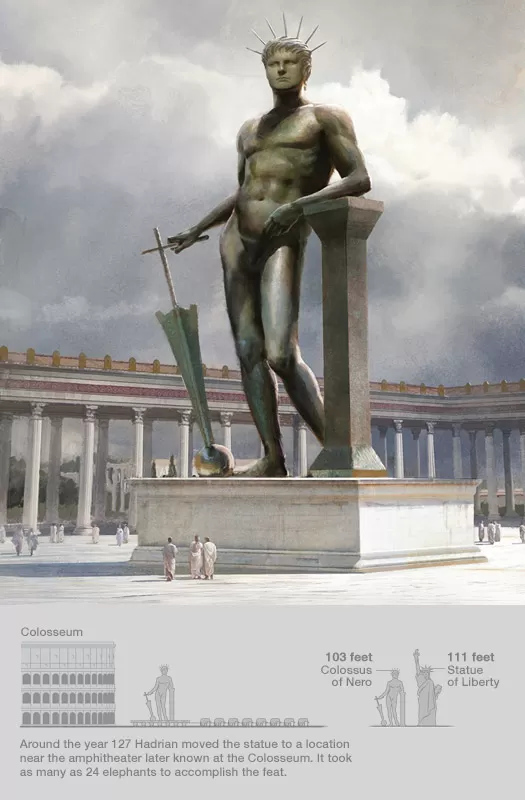
Art: Jaime Jones. Source: Marianne Bergmann, Institute for the Study of the Ancient World, New York University.
Why was Domus Aurea built? Dispelling the myth that “Nero Fiddled while Rome burned”
Burning for six days, the Great Fire of Rome in 64AD caused widespread devastation on the night between 18 and 19 July.
Aristocratic dwellings on the slopes of the Palatine Hill in the heart of Ancient Rome were raised to the ground.
Legend has it that Nero was responsible for the fire, inspiring the expression “fiddling while Rome burns”. Meaning to occupy oneself with unimportant matters and neglect priorities during a crisis.
While it’s easy to cast the blame on Nero, who had ordered his wife and mother killed, had numerous enemies, and is remembered as one of history’s most sadistic and cruellest leaders, there still remains a few flaws with this story.
For one thing, the fiddle didn’t exist in ancient Rome. Music historians believe the viol class of instruments (to which the fiddle belongs) had not been developed until the 11th century! If anything, Nero would have played the cithara, a heavy wooden instrument with four to seven strings. However, there is still no solid evidence that he played one during the Great Fire.
This story may have stemmed from the Roman historian Tacitus who wrote that Nero was rumoured to have sung about the destruction of Troy while watching the city burn; however, he stated clearly that this was unconfirmed by eyewitness accounts.
Perhaps most importantly, when the Great Fire erupted, Nero was at his seaside villa at Antium, some 56 km (35 miles) from Rome. Upon hearing the news, Nero immediately returned and began relief measures, including opening his gardens and public buildings and importing grains from neighbouring towns.
Shortly after the fire, Emperor Nero took advantage of the situation and set about building a new decadent residence and fully landscaped portico villa for himself.
This didn’t sit well with the already mistrusting Romans, spurring on rumours that Nero had ordered the fire to be started just so he could build his Golden Palace and its surrounding gardens.
Nero blamed the Christians for the fire, which at the time was an obscure religious sect, and had many of them arrested and executed.
Convenient coincidence or not, the story of Nero fiddling while Rome burned is based on a popular legend instead of any established truth.
Why was it built in the centre of Rome?
While Emperor Hadrian built his equally large villa (in 2AD) some 22 kilometres from Rome near Tivoli, Nero built his right in the heart of the city. But, why?
Well, according to Prof. D’Alessio, (translated from Italian)
Nero identified himself with the city, because in a regime like that of Nero, it was fitting to take possession of the centre, the heart of the city. It was like saying “the city is mine”. There is an idea of privatisation of public spaces. In fact, what did the Emperors who followed do? They reinstated those spaces that were privatisation by Nero, back to the public. They then built the Flavian Amphitheatre, which is a building for spectators, shows, and for the people.
Why was the Domus Aurea buried and forgotten?
In 68AD Nero committed suicide, bringing to an end the rule of Julio-Claudian dynasty.
After Nero’s death, the Golden House was a massive embarrassment to his successors. Within a decade it was stripped of its marble, jewels, and ivory.
On the site of the lake, in the middle of the palace grounds, Vespasian built the Flavian Amphitheatre, with the Colossus Neronis beside it.
The palace and grounds, encompassing 2.6 km², were filled with earth and built over: the Baths of Titus were already being built on part of the site in 79 AD.
In 104AD, Emperor Trajan began building on top of the Domus Aurea, using it as the foundation for the largest Roman thermal baths ever built (today it’s still visible on the Oppian Hill).
Unfortunately, this meant the rooms of the Domus Aurea were both filled in with dirt and forever sealed off from the sun. To support the extensive baths, serious modifications were required which saw the construction of numerous additional walls.
Within 40 years, the Golden House was completely obliterated, buried beneath the new constructions. Paradoxically this ensured the wall paintings’ survival by protecting them from dampness.
With the Domus Aurea now underground, it was subsequently forgotten about.

By Cassius Ahenobarbus (Own work) [CC BY-SA 3.0 (http://creativecommons.org/licenses/by-sa/3.0)], via Wikimedia Commons
How was the Domus Aurea rediscovered?
One day in the 15th century, a young Roman inadvertently fell through a cleft in the Esquiline hillside. He found himself in a strange cave or “grotta” filled with painted figures.
It didn’t take long for the young artists of Rome to flock to the area and have themselves lowered down into the rooms on boards knotted to ropes.
How did Domus Aurea influence the Renaissance?
The fourth style frescoes that were uncovered have since faded to pale grey stains on the plaster, but the effect of these freshly rediscovered grottesche decorations was electrifying in the early Renaissance, which was just arriving in Rome.
Pinturicchio, Raphael and Michelangelo were all lowered down shafts to study the frescoes and left their mark by carving their names on the walls. The paintings were a revelation of the true world of antiquity.
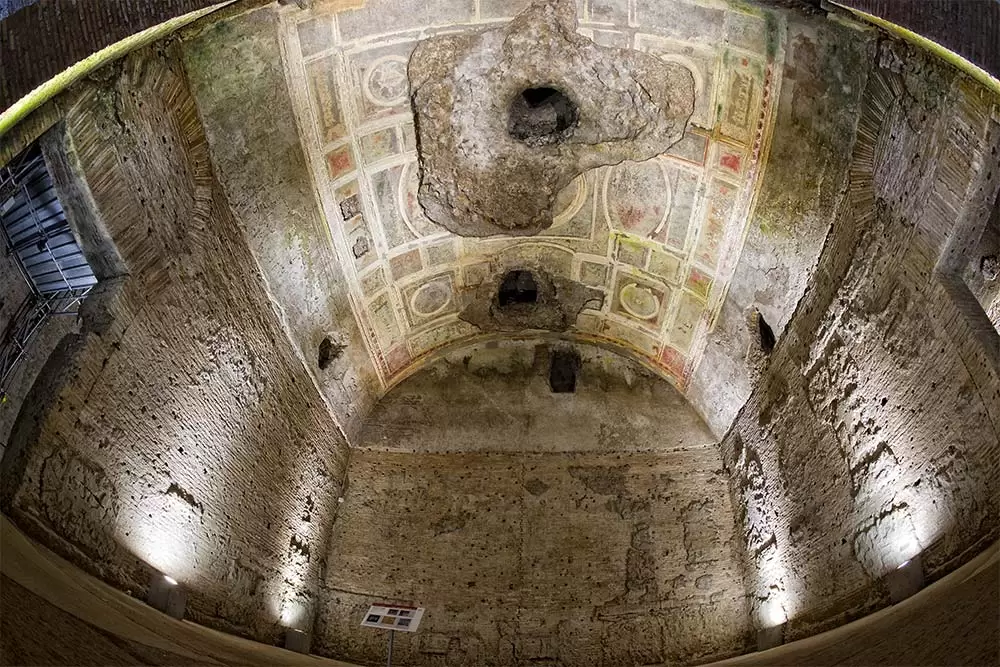
Shown here are two large openings through which artists of the Renaissance entered and the inspiration for future their paintings.
Besides the graffiti, signatures of later tourists, like Casanova and the Marquis de Sade scratched into a fresco inches apart, are the autographs of Domenico Ghirlandaio, Martin van Heemskerck, and Filippino Lippi.
The frescoes’ effect on Renaissance artists was instant and profound. The most obvious example is in Raphael’s decoration for the loggias in the Vatican.
Can I visit the Domus Aurea?
Absolutely! I highly recommend it. After 15 years of being closed, the Domus Aurea reopened to the public in 2014, albeit with very limited access. Open only on weekends, visitors are able to trace the footsteps of Nero with a fantastic guided tour lasting between 75-90 minutes.
Tours are available in English, Italian, and Spanish. Tickets are sold only online and go pretty fast so plan well and purchase your tickets well in advance.
During my three years of living in Rome the Domus Aurea was still closed, so when I found out it had reopened I jumped at the chance to take a look inside. It’s truly an unforgettable experience. The tour groups are small which means you’re able to really appreciate the surroundings as take it all in.
Want to visit Domus Aurea? Book your Domus Aurea tour here or visit Domus Aurea, Colosseum, and the Roman Forum on this guided tour.
What problems does the Domus Aurea Face?
One of the problems facing the Domus Aurea is the importance of maintaining the sensitive climate imposed since the construction of the thermal baths. Inside, the temperature drops to 12 degrees celsius while the humidity hovers around 90%.
Exposure to light causing photosynthesis has encouraged the growth of algae and other microorganisms, which in turn threaten the already fragile frescoes.
Another growing concern occurs on the surface. The roots of pine trees planted during the Fascist era have caused serious structural damage to the ceilings of Domus Aurea directly below them.
Perhaps the most problematic roots are those which are directly above the only remaining ceiling mosaic inside the Domus Aurea.
This delicate mosaic depicting Polyphemus and Nimfeo hovers above an elaborate water feature.
The roots of the pine tree above are so long they have even reached into adjacent rooms, weaving themselves into the structure of the ceiling. The removal of the tree is an extremely delicate task as there is a great risk the ceiling might collapse.

Light sources are kept to a minimal to avoid photosynthesis which can be seen near the floor lights.
How can I help save Domus Aurea?
There are many problems the Domus Aurea faces, but without sufficient funding its future is bleak. Some €35 million are needed.
Unfortunately, the government isn’t able to provide such an amount. Currently, hopes are pinned on finding a private investor. This wouldn’t be the first time that a Roman monument received private support.
Thanks to Italian tax breaks, the luxury shoe company Tod’s spent €25 million cleaning the Colosseum, Bulgari followed suit with spending €1.5 million the Spanish Steps, and Fendi threw €2.5 million euros into the Trevi Fountain. Thanks to these investments, Rome’s monuments have received the much-deserved care they needed and are looking pretty amazing. Let’s hope Domus Aurea will be another success story.
So, while you probably don’t have a spare €35 million, you can show your support by purchasing a ticket for a guided tour, and donate via Crowdfunding. Remember, every bit counts! You can even follow its progress, so you know exactly where your money is going. Very cool!
A big thanks to Professor Alessandro D’Alessio (Scientific Director of the Domus Aurea) for making this article possible.
Don’t miss my guide of 10 Unusual Things to do in Rome
Don’t be treated like a tourist. Learn Italian with my 80/20 method
Travelling to Italy? Don’t be treated like a tourist! Live your best travel experiences and learn Italian for less than the cost of eating at a tourist trap restaurant or a taxi driver who has “taken you for a ride”. I’ve made it easy for you to master the Italian language so you can create lifelong memories as you mingle with locals, get local tips, avoid tourist traps, and make new friends. Who knows, you may even be invited over for afternoon tea by a lovely Sicilian family like I was! Read all about how speaking Italian changed my life and check out my online Italian video course here.
Here’s what my students are saying:

I really enjoyed the Intrepid Italian course, it certainly exceeded my expectations. The learning methodology is great, and easy to follow and found that I progressed much faster in the last 4 weeks than I ever did on my own or using other language apps. Grazie mille Michele, I can’t wait until I can put my new skills into action! – Roma Small
Click here for instant access!
Staying in Rome? Here are my accommodation recommendations
Located on the beautiful Via Nazionale and classically decorated is Hotel Martini. The price and rooms are modest and great value for money considering it’s right near all of Rome’s top attractions.
My personal favourite is Hotel Fellini. The first time I came to Rome alone I stayed here. It’s a hidden gem located right near the Trevi Fountain. The rooms are small but they’re comfortable rooms and beautifully furnished.
Planning a trip and need travel insurance? Get a free quote from World Nomads here.
Want to see more in Rome and beyond? Take a Day Trip!
- 29 Amazing Day Trips from Rome By Train, Car & Guided Tour
- Private Helicopter Tour over Rome
- Skip the Line: Borghese Gallery and Gardens Walking Tour
- Papal Audience Tickets and Presentation
- Rome Street Food Tour with Local Guide
- Early Access: Sistine Chapel and Vatican Museums Ticket
- Roman Gladiator School: Learn How to Become a Gladiator
- Pompei Day trip from Rome
- Small-Group Pompeii with Amalfi Coast Drive and Positano Stop from Rome
- Naples and Pompeii Day Trip from Rome
- Small-Group Rome Food Walking Tour: Trastevere, Campo de’ Fiori and Jewish Ghetto
- 4-Day Tuscany and Cinque Terre Tour from Rome
- Exclusive Catacombs After Closing and Bone Chapel Tour
- Capri Day Trip from Rome
- Tivoli Day Trip from Rome: Villa d’Este and Hadrian’s Villa
- Florence Day Trip from Rome
- Venice Independent Day Trip from Rome by High-Speed Train
Don’t miss these Italy travel guides
- 33 Italy Travel Tips That Will Save You Time, Money and Disappointment
- Where to Stay in Rome | Best Hotels and Best Neighborhoods to Stay in Rome
- 20 Top Hotels Near the Pantheon in Rome for Every Budget
- Rome Tips and Tricks: 27 Things You Should Know Before You Go to Rome
- Top 10 Things to Do in Rome That Aren’t On Your List
- Top 10 Absolute Best Views of Rome That Will Blow Your Mind
- Self-Guided Trastevere Walking Tour: Where to See Rome’s Most Beautiful Streets
- Absolute Best Things to do in Verona, Italy | 26 Must-See Attractions
- 21 Unique Things to Do in Venice You Should Try at Least Once
- Top 7 Authentic Tours and Experiences in Rome [Run by Locals]
- Lakes, Mountains & Castles: 21 Best Things to do in Trento, Italy
- Italy Fun Facts: 126 Unique Things You Didn’t Know About Italy
- 36 Wonderful Things to do in Umbria, Italy (PLUS Map of Umbria)
Like it? Pin it for later!
Over to you!
What are your thoughts on the Domus Aurea? Have you visited Nero’s Golden House? What did you think?
Let me know using the comments section below or join me on social media to start a conversation.
Thanks for reading and I hope you enjoyed this post.
Like what you see? Subscribe using the form below to have all of my posts delivered directly to your email.

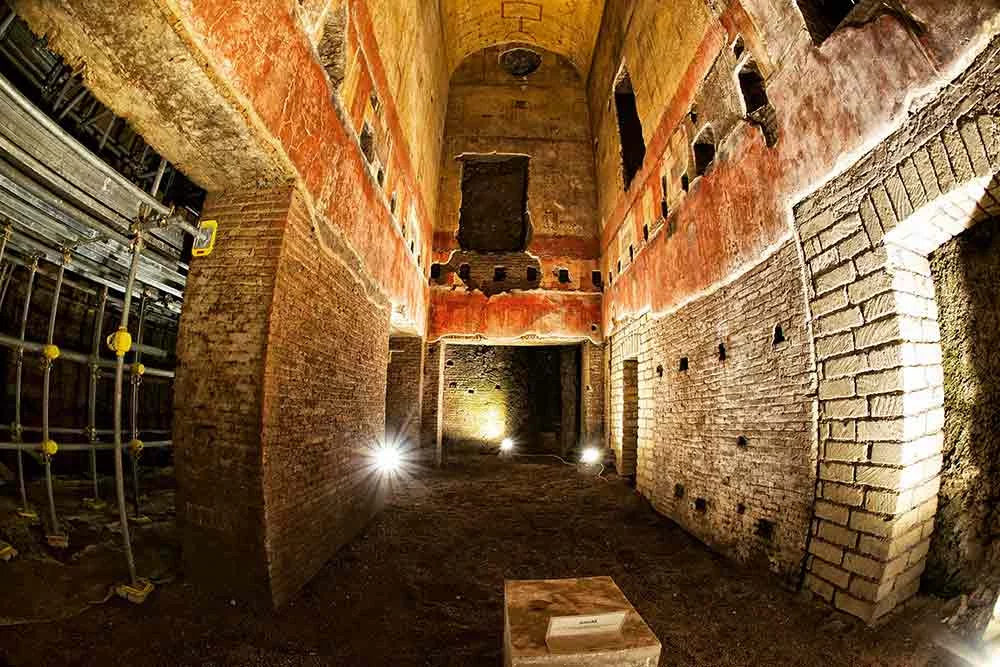





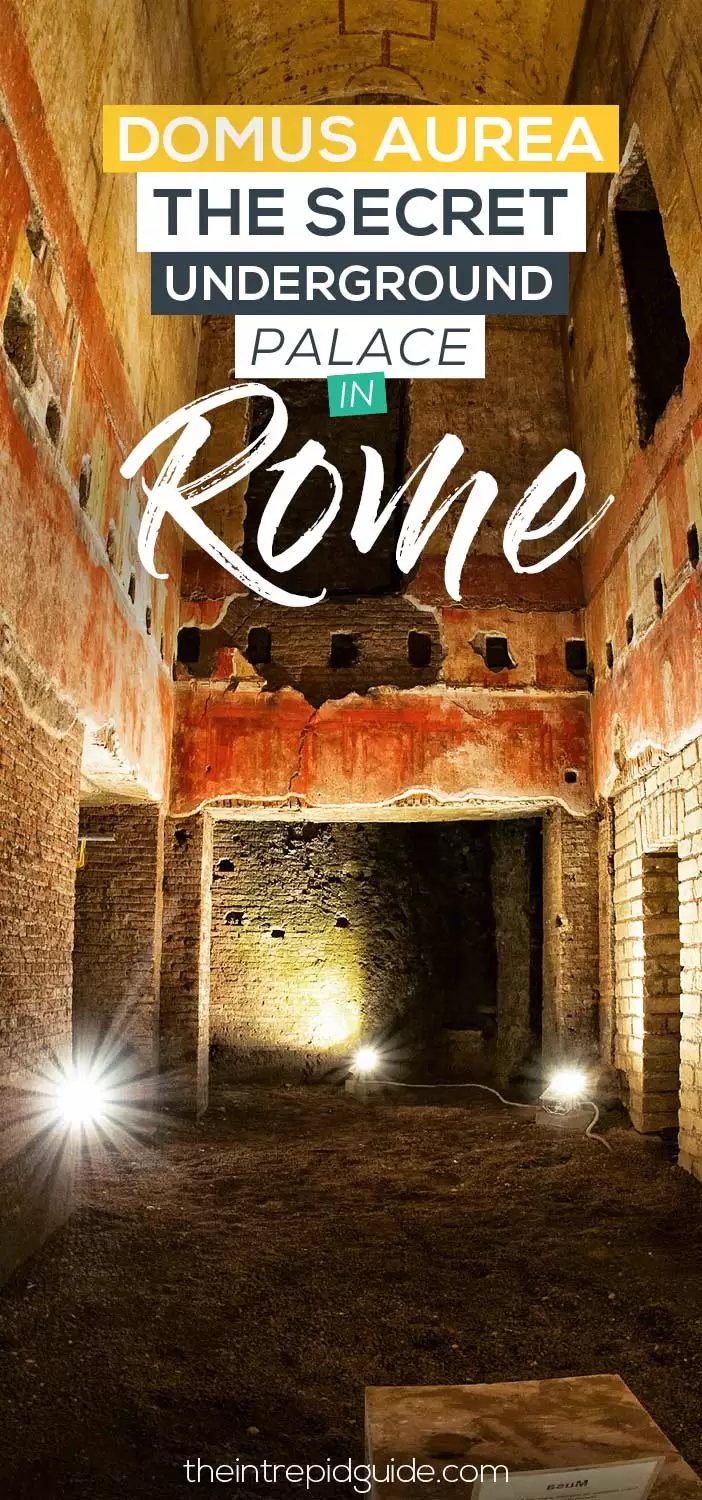
2 comments
That is amazing. I only recently heard about it and what an amazing story. Definitely on the to do list for my next trip to Rome. Thanks again for another great article. Let’s hope they can get the necessary funding to restore it to its former glory.
Thanks Basil. It’s an amazing space. I can’t imagine just how decadent it was in its heyday. I loved seeing the samples of sections they laser cleaned revealing the frescoes underneath all the grime built up over the centuries. Let me know your thoughts after you visit :)